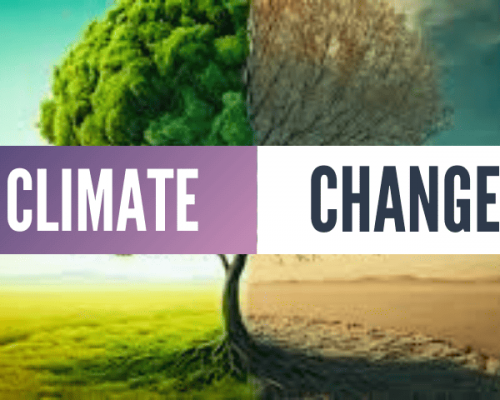In today’s fast-paced world, stress has become an inescapable part of our lives. With the complexity of modern living, finding effective ways to manage stress is more crucial than ever. As we step into 2024, it’s vital to look towards holistic and accessible methods of alleviating stress. One of the most effective and scientifically backed methods is engaging in physical activity. This guide delves into how physical activity can be a cornerstone for stress relief, offering practical tips, understanding the science behind it, and providing a roadmap for anyone looking to enhance their well-being through movement.
The Science of Stress and Exercise – Stress Relief
To understand how physical activity alleviates stress, it’s essential to grasp what happens in our bodies when we’re stressed and how exercise counters these effects. Stress triggers the body’s “fight or flight” response, resulting in the release of various hormones, including adrenaline and cortisol. While these hormones are beneficial in short bursts, chronic stress keeps these levels high, leading to detrimental effects on the body.
Exercise acts as a natural counterbalance to stress. Engaging in physical activity leads to the production of endorphins, the body’s natural painkillers and mood elevators. Moreover, regular exercise regulates and reduces the body’s stress hormones over time, promoting a state of balance and well-being.
Physical Activity as a Stress Reliever
- Endorphin Release: Exercise leads to the secretion of endorphins, helping to improve mood and create a natural high, often referred to as the “runner’s high.”
- Meditative Movement: Activities such as yoga, Pilates, and tai chi combine physical movement with a meditative focus, aiding in mindfulness and stress reduction.
- Improved Sleep: Regular physical activity can help regulate sleep patterns, which can be disrupted by stress, thereby creating a virtuous cycle of stress relief and restful sleep.
- Increased Resilience: Over time, regular exercise builds resilience against stress, making individuals better equipped to handle future stressors.
Finding Your Activity Fit in 2024
With countless fitness trends and activities available, finding the right fit for you is key to consistency and enjoying the stress-relief benefits of exercise. Here are some popular and emerging trends to consider:
- Virtual Fitness Classes: The rise of virtual fitness continues to grow, offering flexibility and a variety of options for all fitness levels, from high-intensity interval training (HIIT) to guided meditation sessions.
- Outdoor Activities: Reconnecting with nature through activities like hiking, cycling, or outdoor yoga can amplify stress relief through the added benefits of fresh air and natural scenery.
- Functional Fitness: Focus on exercises that mimic or reproduce everyday movements, emphasizing core strength, flexibility, and balance, which can also contribute to reducing the physical stress on the body.
- Mind-Body Practices: Incorporating practices that focus on the connection between the mind and body, such as Pilates, yoga, and tai chi, can significantly impact stress levels and overall mental health.
Building a Stress-Relief Exercise Routine
Starting and maintaining an exercise routine can be challenging, but it’s crucial for stress management. Here are steps to create a sustainable routine:
- Set Realistic Goals: Begin with manageable goals that match your current fitness level and lifestyle.
- Incorporate Variety: Keep your routine interesting by mixing different types of activities to engage different muscle groups and prevent boredom.
- Find a Community: Joining a group or finding a workout buddy can increase motivation and accountability.
- Listen to Your Body: Ensure to include rest days in your routine to prevent burnout and injuries.
Overcoming Barriers to Exercise – Stress Relief
One of the challenges in starting an exercise routine for stress relief is overcoming initial barriers. Common obstacles include lack of time, motivation, or self-consciousness. Overcoming these involves planning, setting priorities, and gradually building up confidence and habit. Remember, the goal is progress, not perfection.
The Way Forward
As we navigate through 2024, the importance of physical activity in managing stress cannot be overstated. By understanding the science behind stress and exercise, finding activities that resonate with personal preferences, and overcoming barriers to regular exercise, individuals can unlock the door to improved mental health and resilience. Let physical activity be your ally in the quest for stress relief and enhanced well-being.
It’s important to delve deeper into the relationship between physical activity and stress relief, exploring further strategies, the psychological benefits of staying active, and how to integrate these practices into a modern lifestyle.
Expanding the Mental Health Benefits of Physical Activity
Beyond the immediate relief of stress symptoms, physical activity has far-reaching benefits for mental health. It is associated with reductions in anxiety, depression, and negative mood by improving self-esteem and cognitive function. This can be partly attributed to the concept of “psychological resilience” – the mental process and behavior in adapting to challenges, stress, tragedy, and trauma. Regular physical activity fosters this resilience, equipping individuals with the mental fortitude to face life’s challenges more effectively.
Cognitive Function and Stress Management
Engaging in regular physical activity has been shown to improve brain function across all age groups. It enhances memory, attention, and processing speed, which can be particularly beneficial during high-stress periods when these cognitive functions are under strain. Exercise stimulates the production of growth factors, such as Brain-Derived Neurotrophic Factor (BDNF), which supports the survival of existing neurons and encourages the growth and differentiation of new neurons and synapses.
The Social Aspect of Exercise in Stress Relief
The social benefits of exercise often go underappreciated in discussions about stress relief. Participating in group sports, joining fitness classes, or even walking with a friend can provide a social outlet, reducing feelings of loneliness and isolation. The encouragement and support found in these social networks are invaluable, providing motivation and accountability, which are essential for maintaining a regular exercise regimen.
Harnessing Technology for Stress Management
In 2024, technology continues to play a pivotal role in how we approach physical activity and stress management. Wearable fitness trackers, smartwatches, and mobile apps offer personalized data on physical activity levels, sleep patterns, and even stress levels, encouraging users to adopt healthier habits. Virtual reality (VR) fitness experiences and gamified fitness apps also provide innovative and engaging ways to get people moving, transforming exercise from a chore into an enjoyable activity.
Tailoring Physical Activity to Individual Needs
Understanding that one size does not fit all is crucial in the context of physical activity for stress relief. One person’s solution might not be another’s. This realization opens up a broader spectrum of activities to consider:
- High-Intensity vs. Low-Impact Exercise: Some find stress relief in the high-intensity exertion of activities like boxing or sprinting, enjoying the clear, tangible release of energy. Others may find solace in low-impact, steady-state exercises like walking or swimming, which provide a meditative and reflective experience.
- Creative Movement: Activities such as dance or martial arts offer both physical exertion and an expressive outlet, helping to manage stress through creativity and movement.
- Combining Interests: Integrating physical activity with other interests, such as photography or bird watching, can make exercise more appealing and less of a task. This approach not only aids in stress relief but also enriches personal life with fulfilling experiences.
Easy Ways to Fit Exercise Into Your Everyday Life
Incorporating physical activity into a busy schedule can seem daunting, but with some creativity and planning, it’s entirely feasible:
- Active Commuting: If possible, walking, cycling, or even running to work or the grocery store can integrate physical activity seamlessly into your day.
- Exercise Snacking: Short, frequent bouts of exercise throughout the day can be just as effective as a continuous session. This could be as simple as a 5-minute stretch, a quick walk during lunch, or a series of body-weight exercises in the morning.
- Deskercise: For those with sedentary jobs, integrating movement into the workday can counteract the physical and mental strain. Simple desk exercises, standing desks, or even treadmill desks can make a significant difference.
A Personal Journey
The journey to unlocking stress relief through physical activity is deeply personal and evolves over time. It requires patience, experimentation, and self-compassion as individuals find what best suits their lifestyle, preferences, and stress management needs. The key is to start small, remain consistent, and be open to adjusting your approach as you discover what works best for you.
As we move forward in 2024, let’s embrace physical activity not just as a means to an end but as a valuable component of our daily lives. By doing so, we can enhance our resilience, enrich our lives with joy and fulfillment, and navigate the complexities of modern living with strength and grace.








